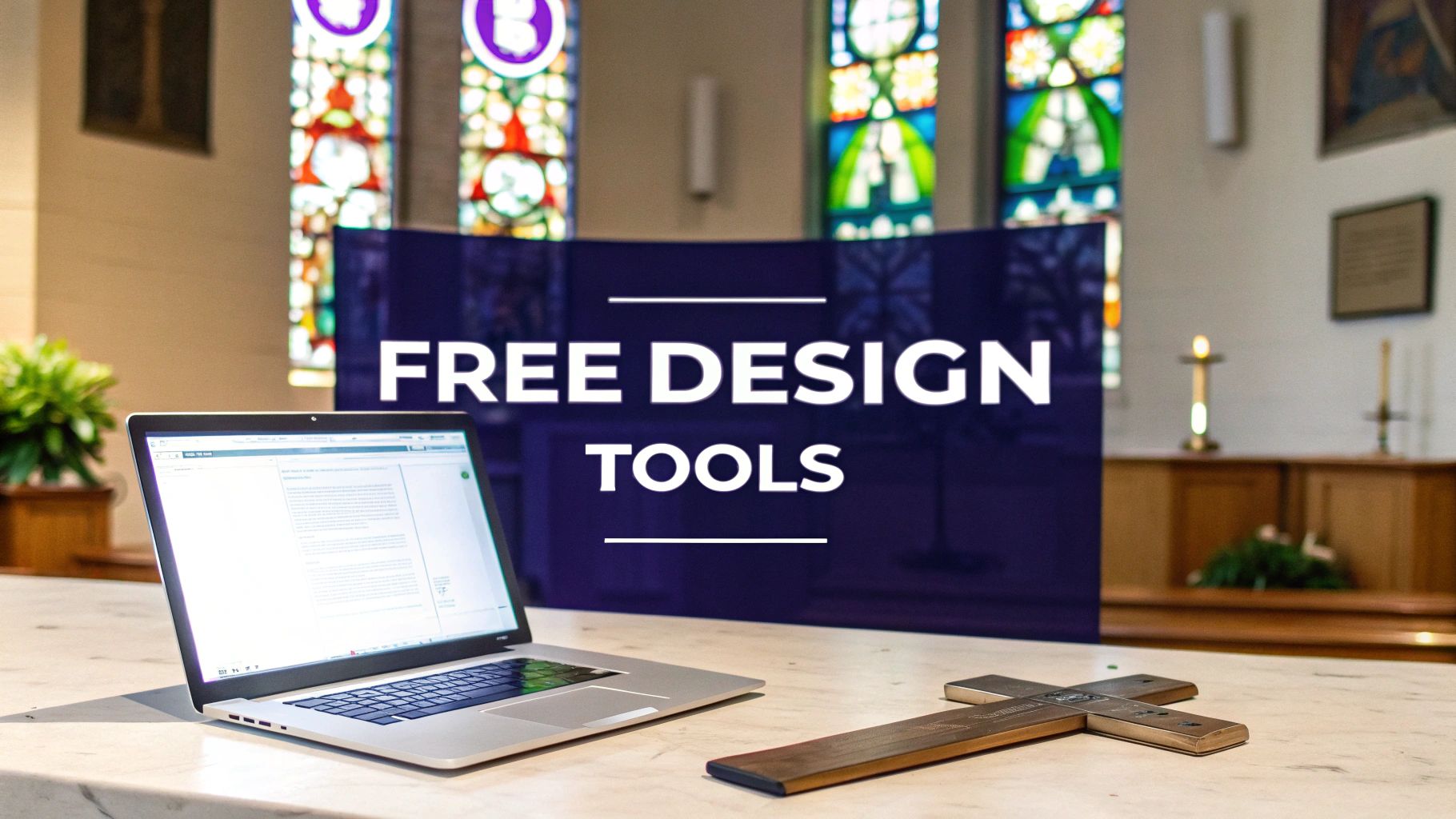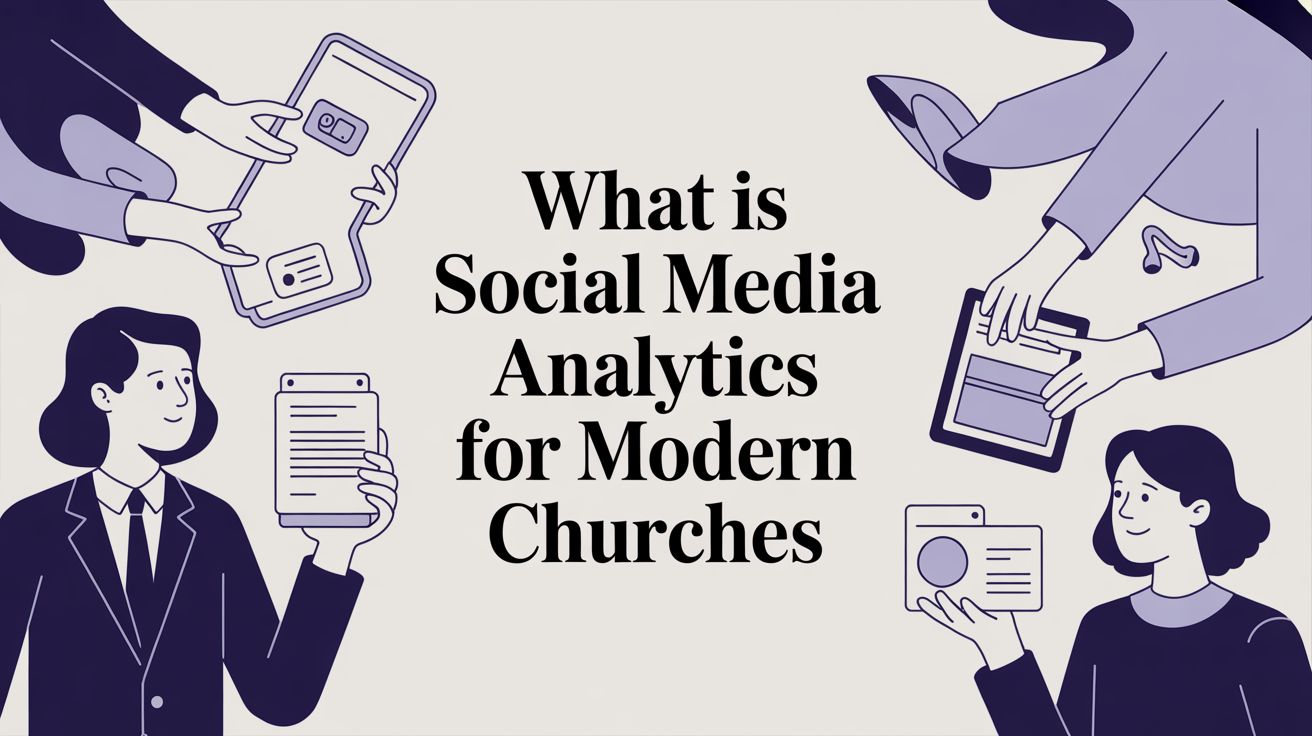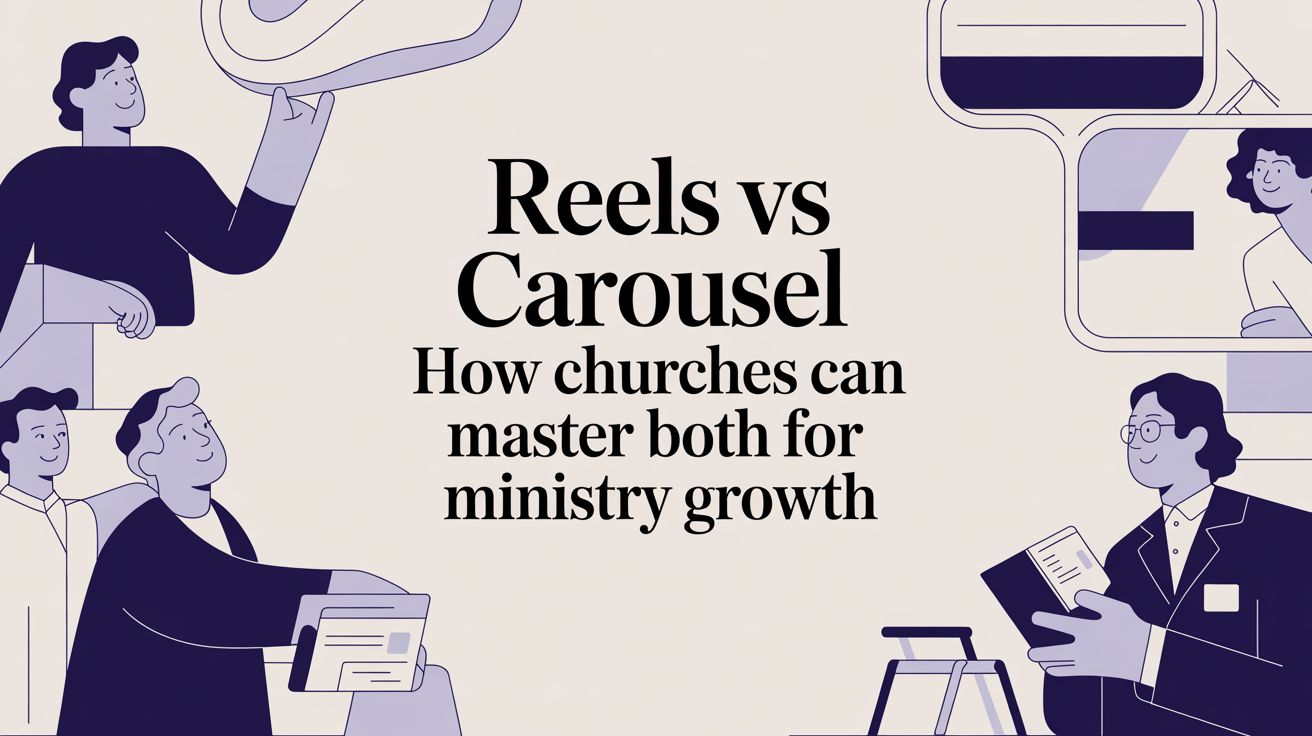Compelling visuals are essential for connecting with your congregation and community online. From sermon series graphics to event announcements, high-quality design helps your message resonate. But hiring a professional or paying for expensive software isn't always feasible, especially for ministries with limited budgets. The great news is, you don't have to sacrifice quality. A wealth of powerful, user-friendly, and completely free graphic design software for beginners is available to help you create professional-looking content that captures attention and communicates your mission effectively.
This guide is designed for church leaders, staff, and volunteers. We will walk you through the 12 best options, breaking down the specific features, practical ministry use cases, and honest limitations of each tool. Each entry includes screenshots and direct links, so you can quickly find the perfect platform for your church's unique needs, whether it's for social media posts, website banners, or event flyers. As you master the tools for creating beautiful graphics, you might also be curious about how these visuals contribute to a larger online presence; our comprehensive website design FAQ can help answer those questions.
And when you're ready to streamline your entire social media workflow, from creating AI-generated reels from your sermons to scheduling posts with a simple drag-and-drop calendar, ChurchSocial.ai is here to help you manage it all effortlessly in one place.
1. Canva: The All-in-One Choice for Church Volunteers
Canva has established itself as the go-to free graphic design software for beginners, and it’s especially powerful for church volunteers and staff. Its intuitive drag-and-drop interface removes the steep learning curve associated with professional design tools, allowing anyone to create stunning visuals for social media, sermon series, event flyers, and weekly bulletins in minutes, not hours.
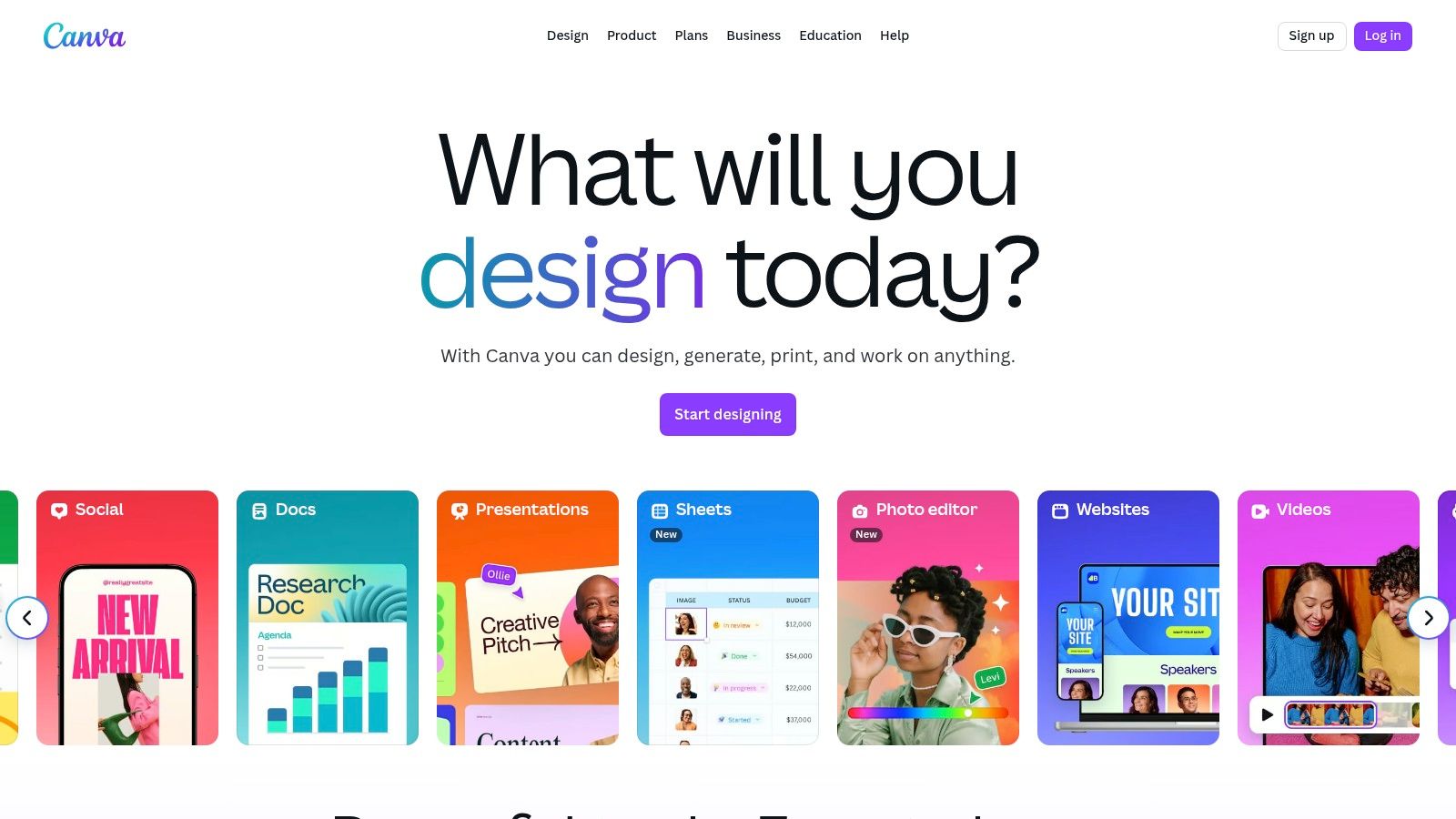
What makes Canva exceptional for churches is its massive library of templates and design assets, including stock photos, icons, and fonts, which are available on its generous free plan. Eligible non-profits can also apply for Canva for Nonprofits to get premium features at no cost. This makes it easy to maintain a consistent, professional look across all your communications, a key element in building a recognizable church brand.
For churches looking to streamline their entire social media workflow, integrating Canva designs with a dedicated management tool is a game-changer. ChurchSocial.ai not only offers its own free church graphic templates, but its simple drag-and-drop calendar allows you to plan, schedule, and post your Canva creations alongside AI-generated content from your sermons, all from a single, unified platform.
Key Features and Considerations
- Pros: Extremely easy to use, massive free template library, and strong collaboration features. Special free programs for K-12 and non-profits.
- Cons: Filtering for "free-only" assets can be difficult, and key features like the background remover require a paid subscription.
- Best For: Creating social media posts, simple videos, and event flyers quickly without any design experience.
- Website: https://www.canva.com
2. Adobe Express: A Familiar Face for Quick Creations
Adobe Express serves as a powerful and intuitive free graphic design software for beginners, bringing the reliability of the Adobe ecosystem to a simplified, web-based platform. For church teams, it's an excellent tool for quickly creating social media content, event flyers, and even simple videos. Its clean interface and guided templates make it easy to produce professional-looking graphics without the complexity of advanced tools like Photoshop.
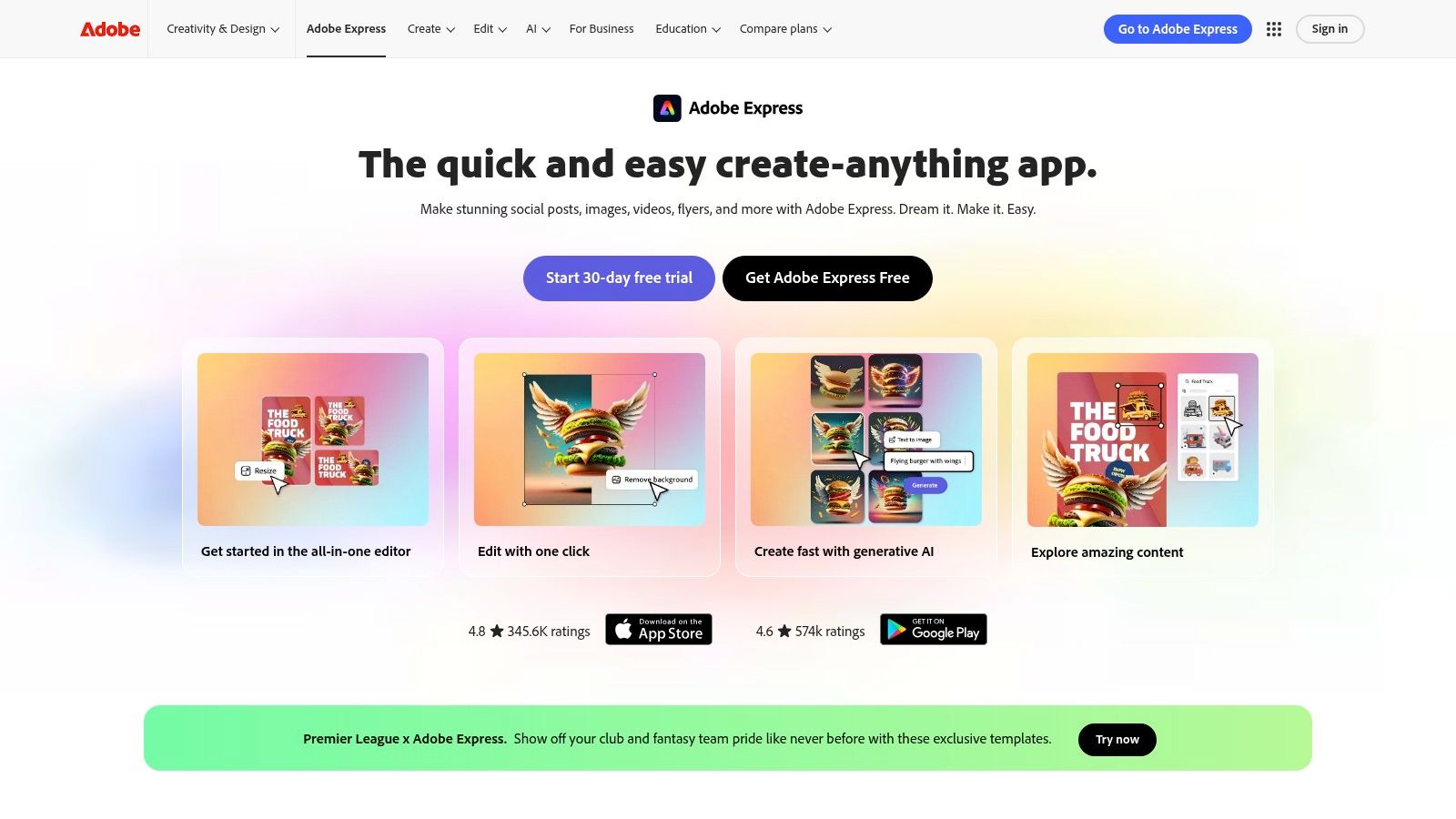
The free plan is notably generous, offering access to thousands of unique templates, a portion of the Adobe Stock photo collection, and the complete Adobe Fonts library. This allows churches to craft a unique visual identity. The built-in "Quick Actions" for tasks like removing backgrounds and converting file types are significant time-savers for busy ministry staff.
For an even more streamlined workflow, you can pair your Adobe Express designs with a specialized church management platform. With ChurchSocial.ai, churches can plan and schedule their visual content from a single drag-and-drop calendar, combining your custom graphics with AI-generated posts from sermon transcripts to maintain a consistent and engaging online presence.
Key Features and Considerations
- Pros: Access to Adobe's high-quality font and stock photo libraries on the free plan, powerful Quick Actions for editing, and a clear upgrade path within the Adobe suite.
- Cons: Key AI features and premium assets are locked behind a subscription, and the free AI credits are limited.
- Best For: Creating high-quality social media posts, basic video announcements, and editing PDFs for church administration.
- Website: https://www.adobe.com/express
3. Figma: Collaborative Design for Growing Ministries
Figma has become the industry standard for collaborative interface design, but its power as a free graphic design software for beginners makes it a fantastic, forward-thinking choice for church teams. While geared toward web and app design, its robust vector tools and real-time multiplayer editing are perfect for creating custom sermon series graphics, social media templates, and event branding from scratch. The browser-based platform means no installation is required, and teams can work together on a design simultaneously.

What truly sets Figma apart for ministry use is its massive community library. You can find thousands of free, pre-built design systems, icon sets, and social media kits that your team can adapt. This allows you to learn professional design principles while building high-quality assets. The free Starter plan is incredibly generous, offering unlimited personal files and access to templates, making it a scalable solution that can grow with your church's design needs.
Once your team has crafted its unique brand assets in Figma, you can easily export them for use in a broader content strategy. For instance, you can take a custom graphic and upload it into ChurchSocial.ai, pairing it with AI-generated captions from your recent sermon. This creates a powerful workflow where high-quality, custom design meets intelligent content creation, all managed within a simple drag-and-drop calendar.
Key Features and Considerations
- Pros: Industry-standard real-time collaboration, a massive community library of free files and templates, and scales perfectly into professional workflows.
- Cons: Geared more toward UI/product design, so print-focused features are more basic. Unlimited team files require a paid plan.
- Best For: Creating custom vector graphics, social media templates, and brand style guides for teams that want to grow their design skills.
- Website: https://www.figma.com
4. GIMP: The Powerhouse for Advanced Photo Editing
For churches ready to move beyond templates and dive into more advanced image manipulation, GIMP (GNU Image Manipulation Program) stands as the best open-source free graphic design software for beginners who want Photoshop-level power without the price tag. It’s a downloadable application for Windows, macOS, and Linux that provides a robust suite of tools for photo retouching, image composition, and detailed illustration.
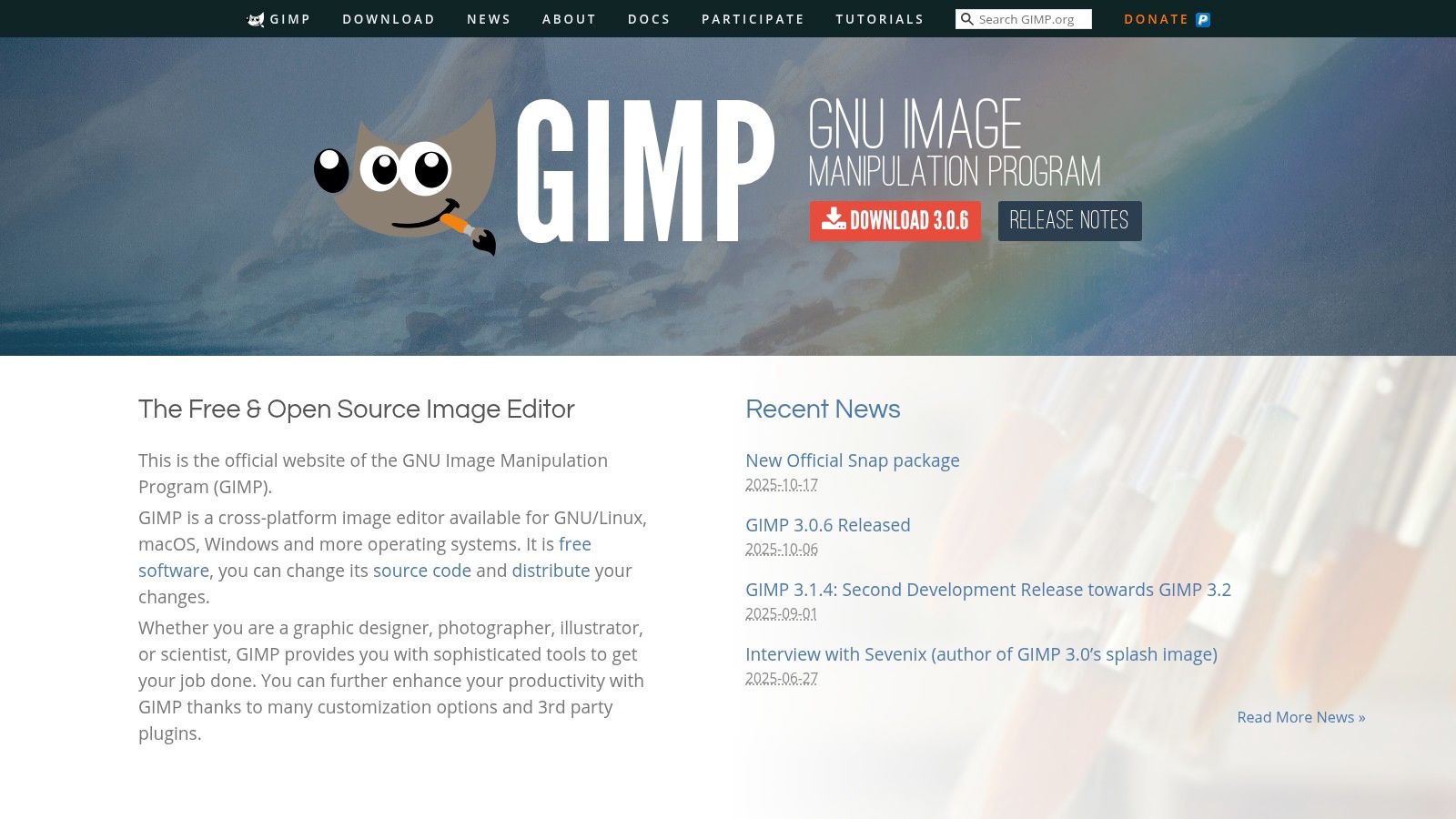
Unlike web-based tools, GIMP offers granular control with features like layers, masks, filters, and extensive plug-in support. This makes it ideal for more complex tasks, such as creating impactful church sermon graphics from scratch or professionally retouching photos from a church event. While its interface can be intimidating for absolute beginners, its active community and comprehensive documentation provide a solid foundation for learning.
Once your custom graphics are perfected in GIMP, you can upload them directly into ChurchSocial.ai. This allows you to schedule your high-quality, custom-made visuals on a simple drag-and-drop calendar alongside AI-generated posts from your sermon transcripts, creating a polished and cohesive social media presence for your church.
Key Features and Considerations
- Pros: Completely free with no ads or subscriptions, powerful enough for professional-level work, and strong community support for learning and troubleshooting.
- Cons: The interface has a steeper learning curve compared to template-based tools, and it lacks the built-in stock asset libraries of platforms like Canva.
- Best For: Detailed photo editing, creating custom illustrations, and users who want to grow their design skills long-term without hitting a paywall.
- Website: https://www.gimp.org
5. Inkscape: The Pro-Level Vector Tool for Custom Church Logos
For churches ready to move beyond templates and create a truly custom brand identity, Inkscape offers a powerful solution. As a professional-grade and completely free graphic design software for beginners in vector art, it's the ideal choice for designing a timeless church logo, sermon series branding, or unique icons for your ministry's app or website. Unlike raster-based editors, Inkscape's vector approach ensures your designs can be scaled to any size, from a small social media icon to a massive welcome banner, without losing quality.
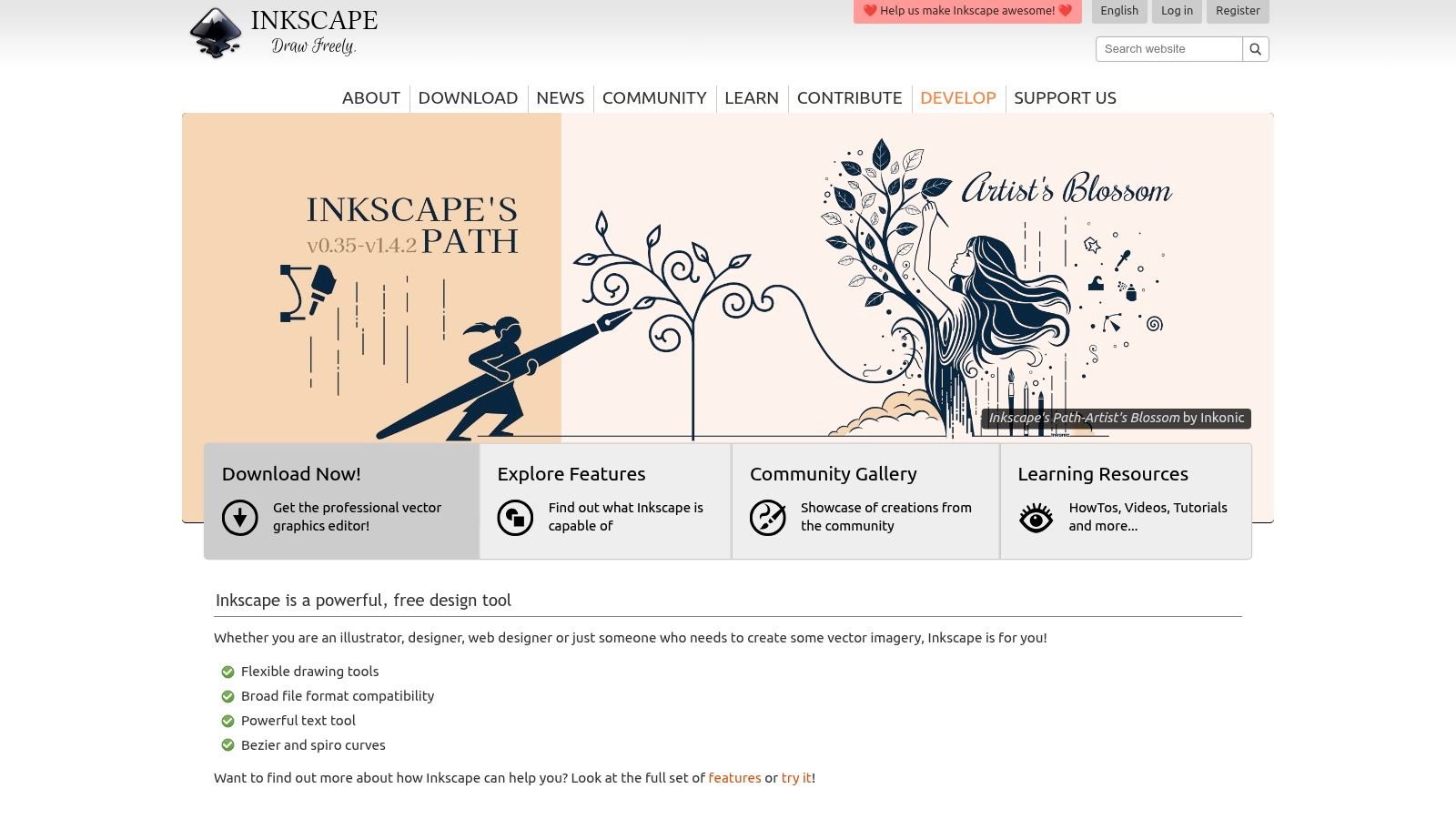
While its interface is more technical than drag-and-drop tools, it introduces users to the core principles of professional design used in tools like Adobe Illustrator. Mastering its Bezier tools and node editing gives you complete control over your creative vision. The logos and custom graphics you design in Inkscape can be easily exported and uploaded into a tool like ChurchSocial.ai, allowing you to seamlessly integrate your unique branding into AI-generated posts and your social media calendar, creating a polished and unified look for your church's online presence.
Key Features and Considerations
- Pros: Professional-level vector features for free, excellent for learning true vector design for print and web, and creates infinitely scalable graphics.
- Cons: Has a steeper learning curve for complete beginners and is more technical than template-driven tools like Canva.
- Best For: Creating custom logos, unique ministry icons, and original vector illustrations for sermon series or event branding.
- Website: https://inkscape.org
6. Krita: The Digital Painter's Canvas
For churches with artists or volunteers who prefer a more hands-on, illustrative approach, Krita stands out as a powerful piece of free graphic design software for beginners focused on digital painting. This open-source tool is perfect for creating custom illustrations for sermon series, unique graphics for youth events, or hand-drawn elements for announcements. It's built by artists, for artists, providing a professional-grade painting experience without the professional price tag.

Unlike template-based platforms, Krita provides a blank canvas and an extensive set of tools, including over 100 professional brushes, brush stabilizers for smooth lines, and a robust layer management system. This makes it ideal for creating truly original artwork that reflects your church's unique culture. Once you've created your custom illustrations in Krita, you can easily import them into a social media management tool like ChurchSocial.ai, which provides graphic templates and a drag-and-drop calendar to seamlessly schedule your new art across all your social channels.
Key Features and Considerations
- Pros: Powerful and professional brush system, completely free and open-source, and ideal for tablet users who enjoy digital drawing.
- Cons: Not suited for quick, template-based designs like social media posts; its primary focus on illustration gives it a steeper learning curve for general graphic design tasks.
- Best For: Creating custom illustrations, concept art for sermon series, and hand-drawn digital assets.
- Website: https://krita.org
7. Photopea: The Photoshop Alternative in Your Browser
For churches needing the power of advanced, layer-based editing without the cost or installation of Adobe Photoshop, Photopea is an incredible resource. As a powerful, browser-based free graphic design software for beginners, it perfectly mimics the interface and functionality of Photoshop. This allows volunteers to open and edit complex PSD files, work with layers, and make precise photo adjustments, skills that are directly transferable to professional-grade tools.
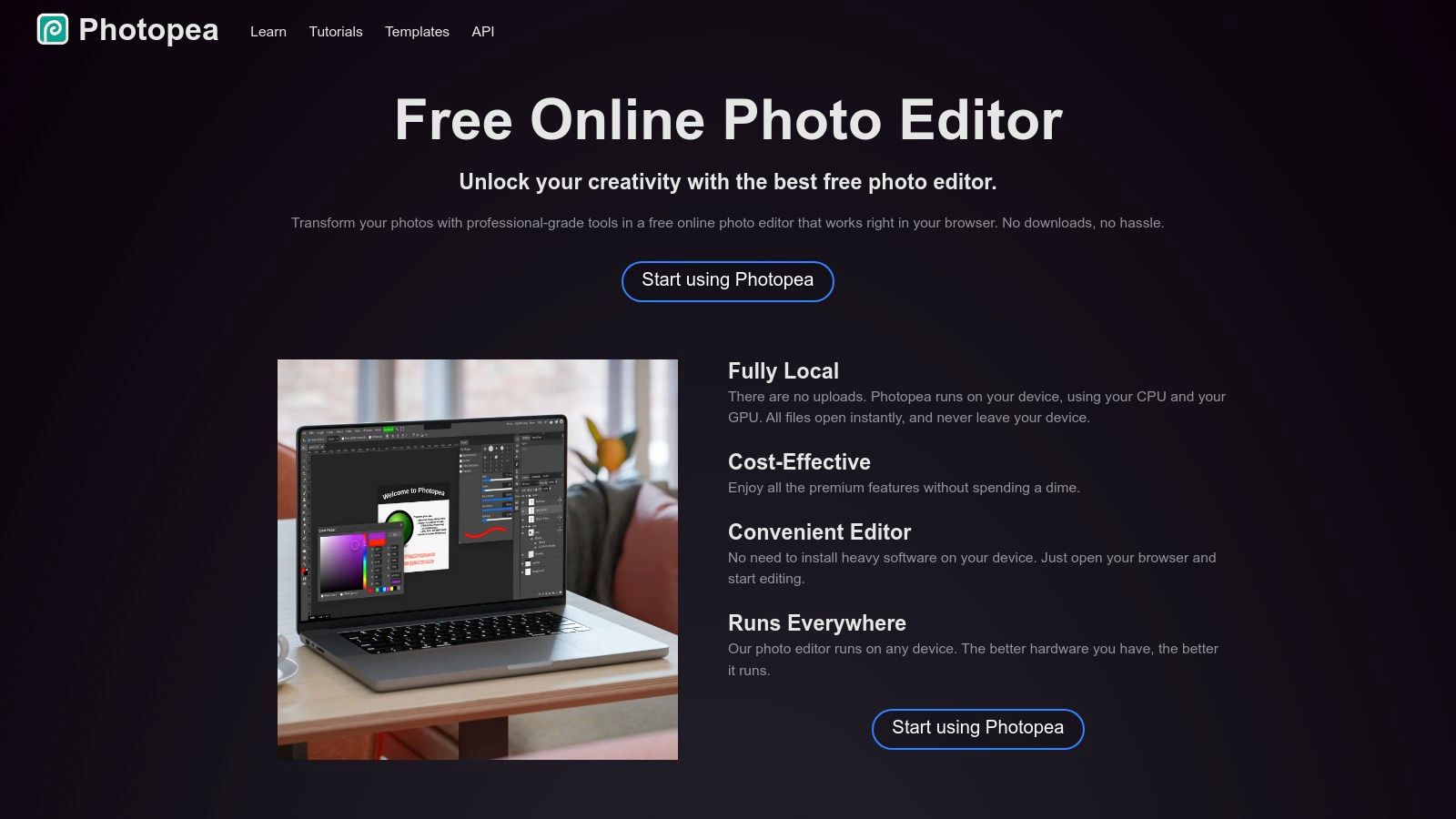
Photopea's greatest strength is its accessibility; it runs on any device with a web browser, including Chromebooks and locked-down church computers, with no installation needed. This makes it ideal for correcting photos for a sermon series, removing backgrounds from staff headshots, or tweaking a design template from another source before uploading it into a social media scheduler.
Once your advanced edits are complete in Photopea, you can export the final image and seamlessly integrate it into your content strategy using ChurchSocial.ai. You can schedule the polished graphic to post across all your channels from a simple drag-and-drop calendar, ensuring your high-quality visuals reach your congregation at the perfect time.
Key Features and Considerations
- Pros: Familiar Photoshop-style interface, supports PSD and other professional file formats, and requires no installation.
- Cons: The free version is ad-supported which can be distracting, and it lacks the advanced AI and batch processing features of paid software.
- Best For: Making detailed photo edits and working with layered PSD files without a software subscription.
- Website: https://www.photopea.com
8. Pixlr: The Speedy Online Photo Editor
Pixlr is a powerful suite of web-based photo editors that brings many Photoshop-like capabilities directly to your browser. It stands out by offering multiple editor modes: Pixlr X for quick, intuitive edits, and Pixlr E for more advanced, layer-based photo manipulation. This makes it an excellent piece of free graphic design software for beginners who want to quickly enhance photos for sermon slides, event promotions, or website banners without getting overwhelmed.

For church social media, Pixlr's AI-powered tools are a major asset. You can remove backgrounds from photos of your pastor or guest speakers in a single click, or use the template library to create professional-looking social media graphics. The platform's accessibility across web, desktop, and mobile means you can make quick edits wherever you are.
Once your images are polished in Pixlr, you can easily import them into a social media management platform like ChurchSocial.ai. This allows you to schedule your custom graphics alongside AI-generated content from your sermons, creating a dynamic and engaging feed from a simple drag-and-drop calendar. It's a perfect workflow for maintaining a high-quality visual presence online.
Key Features and Considerations
- Pros: Multiple editor modes for different skill levels, powerful AI tools for background removal, and a large library of templates and effects.
- Cons: The free version contains ads and places daily limits on AI tool usage. Advanced features for complex print design are limited.
- Best For: Quick photo touch-ups, background removal, and creating social media graphics with a more advanced, layer-based editor.
- Website: https://pixlr.com
9. VistaCreate (formerly Crello)
VistaCreate emerges as a strong contender in the world of free graphic design software for beginners, presenting a user-friendly, drag-and-drop environment similar to Canva. It’s an excellent choice for church teams needing to produce professional marketing materials, from social media graphics to event announcements, without a design background. Its approachable interface allows volunteers to get up and running quickly, creating polished visuals that reflect the church’s message and brand.
What sets VistaCreate apart is the sheer volume of its free offerings. The starter plan includes over 100,000 templates and a library of more than one million creative assets, including photos, videos, and vectors. This generous library ensures that even churches on a tight budget have access to high-quality resources for their Sunday service slides, outreach flyers, and digital newsletters. The free plan also provides a notable 10 GB of storage for your projects. After creating your designs, you can manage and schedule them efficiently using a church-focused tool like ChurchSocial.ai.
Key Features and Considerations
- Pros: Very approachable for beginners, with a robust free template and asset library. The 10 GB of free storage is a significant advantage.
- Cons: Some advanced tools and the most premium assets are behind a paywall. Its community and integration ecosystem is smaller compared to industry leaders.
- Best For: Church staff and volunteers looking for a powerful, free design tool with a massive asset library for creating social media content and print materials.
- Website: https://create.vista.com
10. Vectr: The Simple Gateway to Vector Graphics
For churches needing to create logos, icons, or simple illustrations, Vectr serves as an excellent introduction to the world of vector graphics. As a completely free and browser-based tool, it provides a gentle learning curve compared to more complex software like Adobe Illustrator. This makes it a great choice for creating scalable graphics, such as a new ministry logo or icons for your church website, that will look sharp at any size.
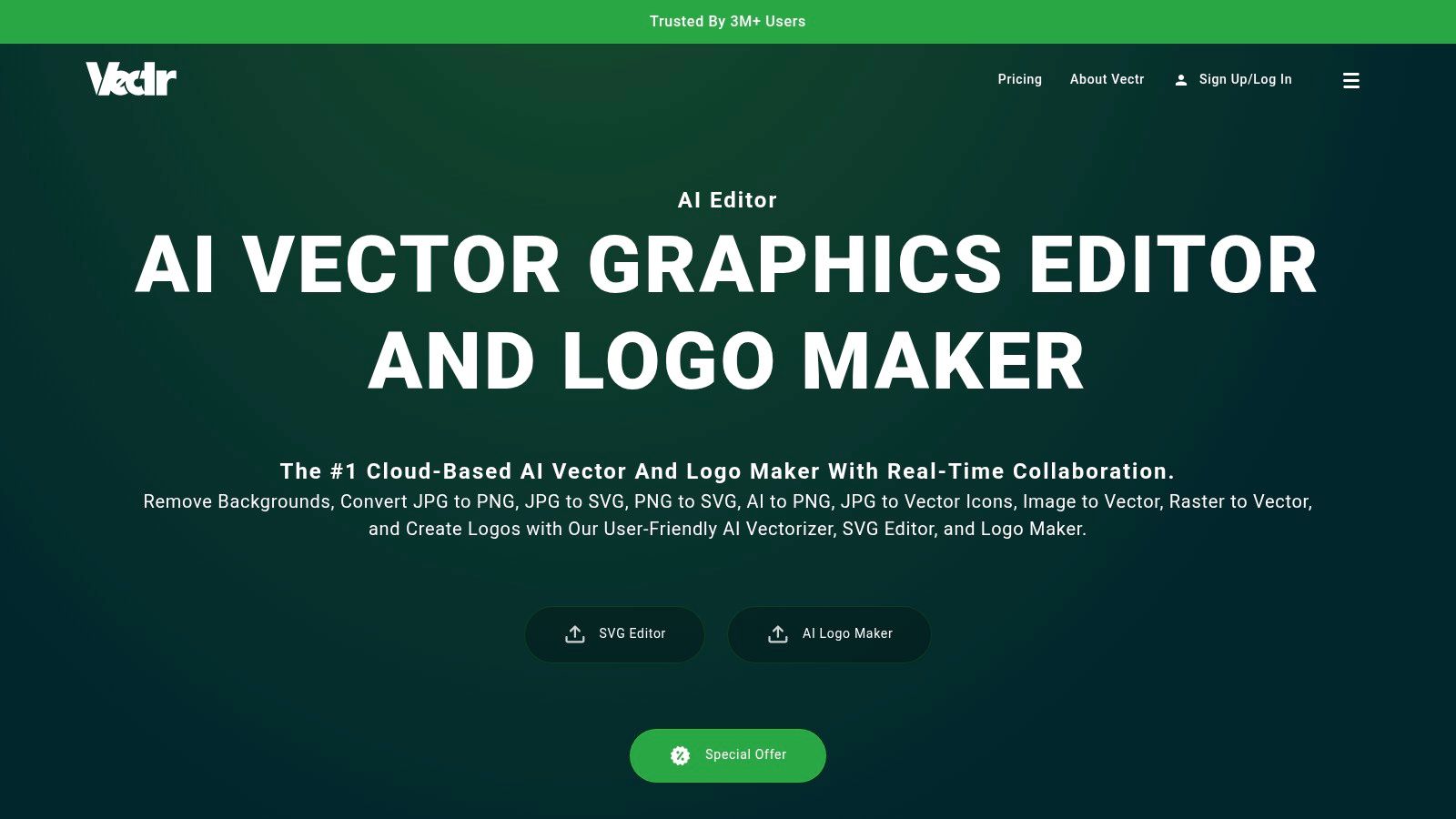
Vectr's standout feature is its simplicity and real-time collaboration. Your team can work together on a design, seeing changes live, which is perfect for getting feedback on a new logo concept from the church board. While it lacks the advanced features of professional tools, its focused toolset is exactly what makes it a top free graphic design software for beginners aiming to create clean, scalable vector art without getting overwhelmed.
Once you’ve created your new church logo in Vectr, you can easily import it into a comprehensive social media tool. Platforms like ChurchSocial.ai allow you to add your logo as a watermark to graphics and videos, helping build a consistent brand identity across all your posts planned on its simple drag-and-drop calendar.
Key Features and Considerations
- Pros: Very easy to learn for beginner vector workflows, works directly in the browser, and offers real-time collaboration.
- Cons: Less powerful than Inkscape or Illustrator for complex work, and its feature set is more limited.
- Best For: Designing simple logos, website icons, and basic vector illustrations without prior experience.
- Website: https://vectr.com
11. Lunacy by Icons8: The Offline-First UI and Graphic Design Tool
Lunacy by Icons8 presents a unique offering in the world of free graphic design software for beginners by combining the power of a native desktop application with a focus on UI design and general graphics. Unlike browser-based tools, Lunacy works completely offline on Windows, macOS, and Linux, ensuring you can design your sermon series graphics or youth event promos without a constant internet connection.
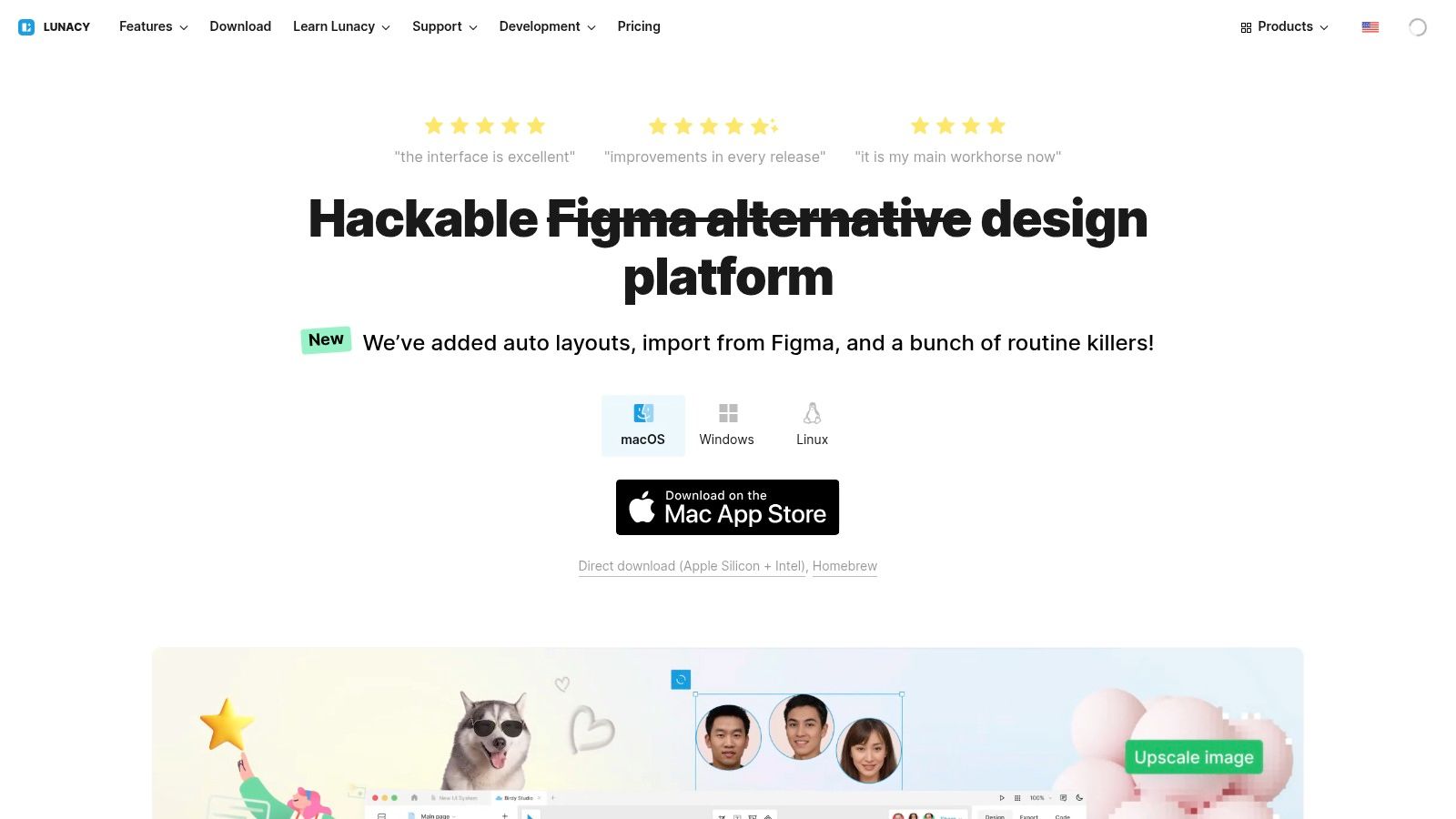
What sets Lunacy apart for church creators is its massive built-in library of high-quality assets from Icons8, including icons, photos, and illustrations, directly within the app. It also features powerful AI tools like a background remover and image upscaler for free. For churches exploring app or website design, its native support for .sketch files and Figma import makes it an excellent gateway into the world of user interface design without a steep learning curve or high cost.
Once you've crafted your perfect announcement graphic in Lunacy, you can easily export it and manage your church's entire online presence with a specialized tool. With ChurchSocial.ai, you can use a drag-and-drop calendar to schedule your Lunacy designs alongside AI-generated posts and reels derived from your sermon transcripts, creating a unified and impactful social media strategy.
Key Features and Considerations
- Pros: Truly free core app with strong performance that works offline. A great bridge between learning graphic design and UI design fundamentals.
- Cons: The community and resource library are smaller than those of Figma or Canva. Collaboration features are still evolving, and some premium assets require payment.
- Best For: Churches wanting a fast, offline desktop app for creating social graphics, website mockups, and app interfaces.
- Website: https://icons8.com/lunacy
12. Microsoft Designer
Microsoft Designer leverages the power of AI to offer a unique approach to free graphic design software for beginners. Instead of starting with a blank canvas, you begin with a simple text prompt. The tool, powered by DALL·E, generates multiple design concepts, including images, layouts, and text suggestions, providing a fantastic starting point for church social media posts, event announcements, or sermon series graphics.
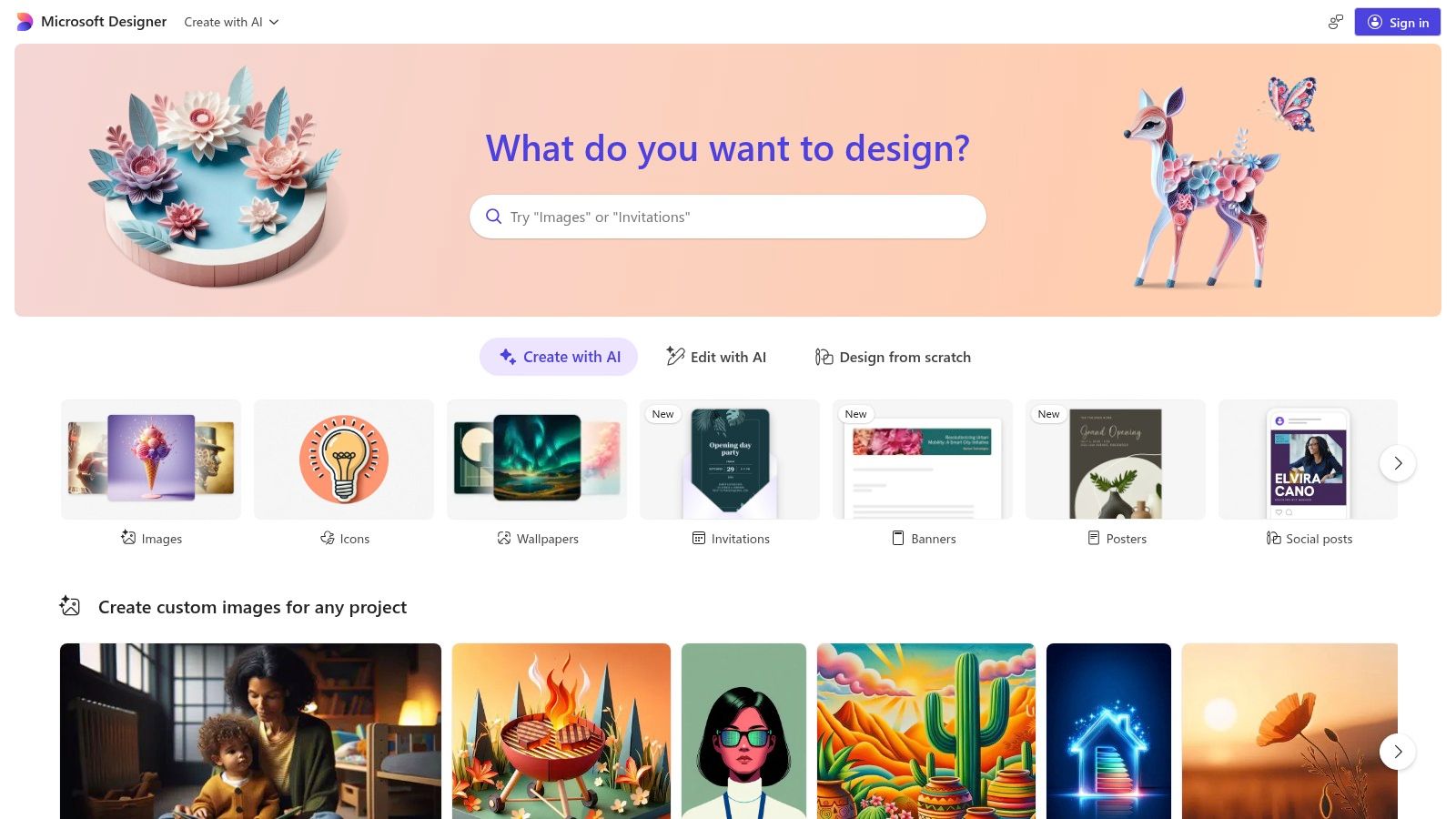
This AI-first methodology makes it ideal for church volunteers who need inspiration or want to quickly visualize an idea without manually arranging elements. For those exploring specific AI art styles beyond general graphics, a free AI photo to anime generator can offer unique creative avenues for youth group content or special events. As part of the Microsoft ecosystem, designs are conveniently saved to your OneDrive, ensuring easy access. To get the most from this tool, understanding the principles of good church graphic design helps in refining the AI's suggestions into polished final products. When your graphic is ready, you can schedule it alongside other content with a dedicated church social media tool like ChurchSocial.ai.
Key Features and Considerations
- Pros: Free to use with a Microsoft account, and its simple prompt-driven creation is ideal for quick concepts and social content.
- Cons: AI features are age-restricted and some capabilities vary by account or region. Its template ecosystem is less mature compared to Canva or Adobe.
- Best For: Quickly generating unique design concepts from a text prompt and creating visuals when you're short on ideas.
- Website: https://designer.microsoft.com
Top 12 Free Graphic Design Tools Comparison
From Creation to Connection: Streamlining Your Church's Social Media
Choosing the right free graphic design software for beginners is a monumental first step toward elevating your church's online presence. Throughout this guide, we've explored a dozen powerful platforms, from the user-friendly brilliance of Canva and Adobe Express to the professional-grade vector capabilities of Inkscape and Figma. You now have a comprehensive understanding of the tools available to create beautiful, engaging visuals that truly reflect the heart of your ministry.
This journey of discovery highlights a crucial insight: the best tool for your church depends entirely on your specific needs. Are you primarily creating social media posts and event flyers? Canva or VistaCreate might be your perfect match. Do you need to edit photos for your website or newsletter? Pixlr and GIMP offer robust, layer-based editing. For those with an eye on creating scalable logos or custom icons, Vectr or Inkscape provide the necessary precision.
Key Takeaways for Your Ministry
As you move forward, remember these core principles to make your selection process effective:
- Start with Your Goal: Don't choose a tool just because it's popular. First, define what you need to create most often, whether it's sermon series graphics, volunteer announcements, or quote cards. This will immediately narrow down your options.
- Acknowledge the Learning Curve: Tools like GIMP and Inkscape are incredibly powerful but come with a steeper learning curve. If you have limited time or volunteer capacity, a template-driven platform like Adobe Express or Microsoft Designer will deliver faster results.
- Don't Fear Limitations: The "free" tier of any software will have limitations. Instead of seeing this as a barrier, view it as a creative challenge. Working within these constraints can often lead to more focused and consistent branding for your church.
The Next Step: From Design to Discipleship
However, creating stunning graphics is only the first part of the equation. The real impact comes from integrating these visuals into a consistent, manageable, and Spirit-led social media strategy. This is where the workflow often breaks down for busy church staff and volunteers. Juggling multiple platforms, scheduling posts, and writing meaningful captions can quickly become overwhelming.
This is precisely why ChurchSocial.ai was created. Imagine taking the beautiful graphic you just designed in one of these free tools and seamlessly scheduling it across all your social platforms from a single, intuitive drag-and-drop calendar. But it doesn't stop there. With ChurchSocial.ai, you can create AI-generated reels from your sermons, create AI-generated content from the sermon transcript like social posts and blogs, and use our graphic templates and editor to create and post photos and carels. Our simple drag-and-drop calendar allows churches to easily manage and update all of their social media, and we even integrate with Planning Center and other church calendars to create content for your events.
By pairing the creative power of free graphic design software for beginners with the all-in-one management of ChurchSocial.ai, you create a sustainable system. This system saves precious time, reduces volunteer burnout, and amplifies your ministry's message far beyond your church walls, turning static posts into genuine points of connection.
Ready to bridge the gap between creating content and building community? See how ChurchSocial.ai can streamline your entire social media workflow, from sermon-to-reel AI generation to a simple drag-and-drop calendar. Visit ChurchSocial.ai to discover how you can plan, create, and manage your church's digital outreach with purpose and ease.

